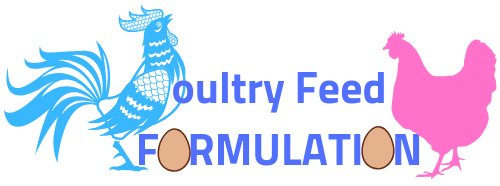Over the past half a century, poultry production has become more intensive and in the process supplied consumers with an abundant and healthy process of protein. Today’s consumers can look forward to safe meat, eggs and chicken by-products.
Great gains have been made in production as well as efficiency while minimizing the environmental impact partly due to the use of additives in the poultry feeds.
What are feed additives?
Almost all diets contain additives, including the diets of humans. In poultry feed manufacturing, the feed additives are used in order to boost the efficiency of the growth of the poultry stock as well as or the bird’s laying capacity, to prevent incidences of diseases in the poultry and also to improve the poultry’s feed utilization.
All the additives that are used in the poultry feed formulation must have been approved for use. They must also be used as directed with regards the to the concentration levels as well as the duration of feeding the poultry.
The poultry feed additives used are also specific to the age and the types of the birds being fed. In many cases, the guidelines for the use of feed additives in poultry feeds will be provided by the relevant government agency such as the department of agriculture in your country. Here is a look at some of the common feed additives that are included in poultry feed formulation:-
Antibiotics: Antibiotics have been used in the poultry industry since 1950 mainly to boost the growth of the birds and to improve feed efficiency. Antibiotic dietary supplementation can also significantly boost egg production.
Antioxidants: Common antioxidants used as feed additives for poultry feeds include BHA, BHT and ethoxyquin. They mainly help in preventing oxidative rancidity in the bodily fat of the poultry.
Grits: Grits are hard substances that can either be soluble or insoluble. Once ingested by the chicken, they will remain trapped in the gizzard to help in facilitating the grinding of the poultry feed. Some of the common grit materials used in poultry feeds include clam shells, oyster shells, gravel, limestone, pebbles or even granite. If you are feeding your chickens mash of finely ground poultry feeds, then you may not need a lot of grit.
Xanthophylls: The xanthophylls help in producing the deep yellow pigmentation on the shank, feet, beak and egg yolks of the poultry which is quite popular with many buyers and end users. It is usually indicative of top quality poultry products.
Acidifiers: The acidifiers are added on the poultry feeds to help in lowering the PH of the feed and contribute to excellent gut health which is good for the health of the chickens. A low PH acts as a natural inhibition against the various pathogenic microbes. The acidifiers can be in the form inorganic acids or organic acids. They exert their antimicrobial function directly on the feed before it is ingested and after it has been ingested.
Related posts:



your products are good but don’t have other means of payment for us who in need of those manual books and the software for feed formulation like me who is in Uganda for example western union
second easy means of communication like WhatsApp numbers, facebook etc reply me on my email address
Please let me know if you’re looking for a author for your blog. You have some really good articles and I believe I would be a good asset. If you ever want to take some of the load off, I’d absolutely love to write some articles for your blog in exchange for a link back to mine. Please shoot me an email if interested. Thanks!
I have been examinating out a few of your articles and i can claim nice stuff. I will surely bookmark your site.
Have you ever wanted to work from home or just top up your earnings ? This tried and tested system teaches you how you can make a small fortune from the comfort of your own home. http://bit.ly/-Work-from-Home
Have you ever wanted to work from home or just top up your earnings ? This tried and tested system teaches you how you can make a small fortune from the comfort of your own home. http://bit.ly/-Work-from-Home
Your Blog is have good look. Content of your blog is quite good but traffic stats are very bad. Check my free video for enhancing your traffic. http://activeterium.com/CcIY .Shoot me email from free Website Audit report.
WordPress has now enabled voice comments for websites. Bring your website up to date and get the free plugin here, http://bit.ly/Voice-Comments
Нi there, always i used to check website posts here in the early
hours in the dawn, as i lоve to ⅼearn more and more.
Hello, just wanted to tell you, I loved this article.
It was practical. Keep on posting!
viagra professional o superactive viagra retail health care products,viagra toronto